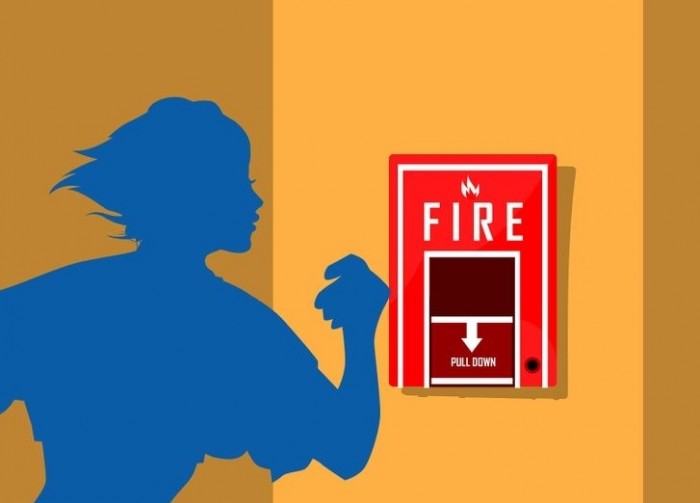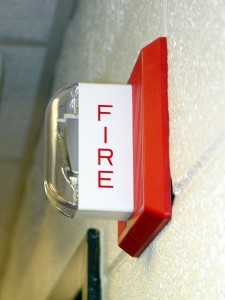Fire alarm systems are expected to help protect people, property, and assets. But you cannot tell if they are fully operational just by looking at them. As with any other system, electronics and other components can degrade over time and compromise the system’s operation. Dust, dirt, and other contaminants can cause problems with smoke detectors. Such things as vandalism, remodelling, and improper maintenance procedures can also damage fire protection equipment. The good news is that with proper testing, inspection, and maintenance you can keep your fire alarm system at optimum operating performance. In addition to ensuring protection, keeping your system in good condition reduces expenses by preventing unbudgeted emergency repairs and costly false alarms.
WHERE TO START
Knowing the system’s age and maintenance history helps you determine the steps you must take to maintain its operational readiness. Systems under five years old should require little effort to maintain. Periodic system testing and inspection by qualified specialists can detect many such problems.
Systems between five and ten years old may experience component breakdown caused by harsh, but normal, environmental factors. Voltage fluctuations, temperature, and humidity may cause system failure or nuisance alarm problems.
Systems between ten and fifteen years old can still provide appropriate life-safety response. However, systems in this category need close attention, even with proper maintenance procedures in place. If the system has had a history of poor maintenance or none at all, it is likely that failure of components and improper monitoring of system components will occur. Consider budget allowance for the upgrading of the system.
THE STEPS
The maintenance activities for fire alarm systems can be summed up in five steps.
- Test and calibrate alarm sensors, such as flame and smoke detectors, per manufacturer specifications. This requires knowing about the different sensors—and their testing requirements, failure modes, and re-installation requirements.
- Simulate inputs and test the annunciators. This requires specific knowledge of the system under test.
- Set sensitivity. This requires an understanding of the particular system, the specific application, and fire detection theory.
- Coordinate with fire department to test the input to their system.
- Check the battery for corrosion and expiration date, then take appropriate action, if necessary.
These steps seem simple enough, provided you have the knowledge. However, that knowledge is useless if you don’t pay absolute attention to detail. Experience shows that maintenance technicians under pressure to keep production equipment running often overlook important details because “nothing is broken.”
The local authority having jurisdiction (AHJ) and insurance companies also influence, recommend, or set forth standards they deem necessary for the proper operation of life-safety systems. AHJs may establish guidelines that exceed NFPA guidelines.

In virtually all cases, the standards outline minimum requirements. The potential problem, however, is that not all fire alarm systems are subject to the same environmental and ambient conditions. Therefore, meeting minimum standards of all applicable codes and standards may not provide the optimum protection for a facility. Because of this, manufacturers’ service organisations may recommend inspections and maintenance that exceed published standards and guidelines.
SYSTEM MAINTENANCE
In addition to system age, you must consider budget and staffing resources. Does your staff have the time and expertise to properly maintain this critical life-safety system? Will it be more cost-effective to have the manufacturer’s service organisation or a contractor specialising in fire alarms perform the maintenance? The most stringent standards and guidelines are meaningless unless the people performing the inspection, testing, and maintenance are knowledgeable and qualified to service the fire alarm system.
Facility maintenance people usually do not possess the experience and knowledge found in manufacturer’s service technicians, whose daily work revolves around fire alarm system technology in a variety of environments and circumstances.
You can get around the training dilemma by using a factory service agreement. These can range from a basic on-call agreement to regularly scheduled service visits. Emergency service offering four-hour and eight-hour response times, on a 24-hr-a-day basis, is an option available in most service agreements. This service usually provides response within the specified time, along with repair and replacement of equipment. Rapid emergency response is almost universal for the healthcare and lodging industries because of around-the-clock occupancy by staff, patients, and guests.
For most facilities, contracting out that function makes sense. Before you sign a maintenance agreement, though, ensure technicians are certified by the manufacturer and trained accordingly. The best-designed fire alarm system can be rendered ineffective, if improperly maintained.







